I found a copy of The Secret Garden by Frances Hodgson Burnett when sorting out some old books recently and flicked through it again – hence this post. I suspect you probably have read it yourself, read it to children, or seen one of the film or TV versions. But what did you think of the story?
It always strikes me as a bit of a Marmite book. Seen by many as a children’s classic, full of charm which tells of redemption and the ultimate “niceness” of people. But it can also be read as saccharine, sentimental even mawkish, or even, alternatively, as one critic put it, as “a story about neglect, remiss parenting and mental illness; a book that, for all its light, is underpinned by darkness”.
There’s no doubting its popularity though, so I wondered where Burnett found the idea for the story? Her son said she was workaholic who “wanted to be in the land of make-believe as often and as long as possible” , but did she just make it all up or was there really a Secret Garden with “ beautiful old walls ” which ‘bloomed and bloomed and every morning revealed new miracles”
Frances Hodgson was born in Manchester in 1849, but after the death of her father her mother emigrated with the family to Tennessee to be with her brother. They were not well off and Fanny, as she was known in the family, started writing very early and telling the first magazine she approached with her stories that “my object is remuneration!’ By the time she was 20, her mother was dead and she was the family breadwinner, churning out stories with an uncanny understanding of what would sell.
In 1873 she married Swan Burnett, and had two children, Lionel and Vivin, before moving to Washington. However it wasn’t long before she half abandoned her husband and children and went off travelling around Europe and North America often for long periods paying for her new lifestyle by turning herself into what she called ‘a pen-driving machine‘![]()
She finally divorced Burnett in 1898 and moved back to England, renting Great Maytham, a Georgian country house in Kent. Two years later she made a disastrous marriage to Stephen Townesend who she then quickly divorced as well. When the owners, to her dismay, sold Maytham she returned to North America thereafter dividing her time between England, Long Island and Bermuda – in all crossing the Atlantic no less than 33 times – until her death in 1924.
She became immensely wealthy through writing 53 books and 13 plays mainly for adults but, despite being best sellers at the time, they have largely have long been forgotten because they were, in the words of her ODNB biographer “facile and superficial”. Instead it was her children’s books that have kept her name alive . Her first was Little Lord Fauntleroy, published in 1886, with a central character based on one of her sons, which made her the richest woman writer of her day, It was followed by others including The Little Princess, but the one that really has achieved classic status is of course The Secret Garden which appeared quite late in her life in 1911.
The Secret Garden describes how two unloved, but to be honest, rather disagreeable children are somehow transformed by the discovery of a hidden garden which they take over and where they watch nature springing into life aided and abetted by a robin, and a local boy, Dickon who was “a sort of Faun who charms wild creatures and tame ones”.
The garden, which is almost the main character is based on a series of gardens Frances had known during her life.
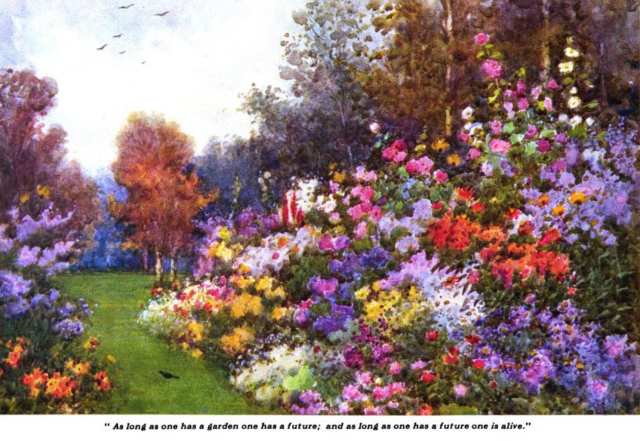
From In the Garden, 1925
One was at her childhood home before the family emigrated, where the garden had “a border of small flowers I do not now know the name of , which tiny long-remembered things grew round a small bed in the centre of the few yards of iron-railed front garden before a house in an old square in the ugliest, smokiest factory town to be found anywhere in all the North of England.” Next was a poor, abandoned garden in Salford which lay behind a “little green door in a high wall . . .and the little door so long unopened, and once there had been flowers and trees in it.” However the most important was undoubtedly the garden at Maytham Hall built by the Monypenny family between 1721 and 1760.
In 1898 looking for a new home after her divorce Fanny wrote to her son Vivian, who was at Harvard University: “I think I am going to take a place called Maytham Hall, Rolvenden. It is a charming place with a nicely timbered park and a beautiful old walled kitchen garden. The house is excellent—panelled square hall, library, billiard room, morning room, smoking room, drawing room and dining rooms, seventeen or eighteen bedrooms, stables, two entrance lodges to the park and a square tower on the roof, from which we can see the English Channel.”
It’s clear that it was the garden that attracted her. As she spelled out very clearly in her last book “In the Garden” I have been a passionate gardener since I was seven years old” but until she moved to Maytham she doesn’t seem to have ever been a real garden maker or gardener.
Maytham’s walled garden had largely been abandoned, so one can almost see the storyline of The Secret Garden forming as she explored her new home, peering through the ironwork of the overgrown gate and discovering there had once been an old orchard inside. She immediately conjured up a plan to bring the garden back to life, ordering seed and nursery catalogues and hundreds of rose bushes.
Her son Vivian was later to write in his mother’s biography that: “It was entered by a low arched gateway in the wall, closed by a wooden door, and provided the particular sense of quiet and seclusion that Mrs. Burnett always required for her work.”
“The thing next to do was to make it beautiful and cosey [sic], and this meant, of course, flowers. The ground underneath the twisted, leaning old apple-trees was cleaned of all its weeds and thorns, sown with grass, and then, at every available place, roses were planted to climb up the ancient trunks and over the walls. The result was a bower of incredible beauty and fragrance during the spring, as well as shady and restful during the summer.”
A gazebo became her outdoor writing room because ” to write as one should of a garden one must not write outside it or merely somewhere near it , but in the garden.” One of her gardeners was later interviewed by her biographer Ann Thwaite and he said that “It was as if she had something inside her she just had to get out,” and the staff knew not to disturb her. But, as Thwaite goes on, Fanny wasn’t a hands-off gardener who “waved her hand at her gardeners and saying “Let that be an Herbaceous Border!” she also got her hands dirty with real gardening and quotes letters telling of her transplanting seedlings and pruning.
The Secret Garden written in 1911 shows that her knowledge of gardening was practical.Indeed she wrote in In the Garden, : “Wheresoever I go I can never leave the earth alone . I must make some bit of it into a garden while I am near it …I love it all . I love to dig . I love to kneel down on the grass at the edge of a flower bed and pull out the weeds fiercely and throw them into a heap by my side”
It’s clear that creating this new Rose Garden provided the inspiration for the Secret Garden. Even the robin which she eventually tamed to take crumbs from her hand, and which features so prominently in the book was based on she met at Maytham.
In 1907 the owners of Maytham decided to sell up and she was forced to leave. She later recalled her last days there in My Robin, a short sentimental book published in 1912. about her relationship with the bird.
“There had been snow …and the park and garden were white. I threw on my red garden cloak and went down the flagged terrace and the Long Walk through the walled gardens to the beloved place… and stood under the tree and called him for the last time. He did not keep me waiting and he flew to a twig very near my face. I could not write all I said to him…,I talked to him as if he knew all I knew. He put his head on one side and listened so intently that I felt that he understood. I told him that I must go away and that we should not see each other again and I told him why. But you must not think when I do not come back it is because I have forgotten you,” I said. “Never since I was born have I loved anything as I have loved you–except my two babies. Never shall I love anything so much again so long as I am in the world…. Then I went out of the rose-garden. I shall never go into it again.”
The new proprietors commissioned Edwin Lutyens to rebuild the central section of the house, and landscaped the gardens and surrounding parkland , in partnership with Gertrude Jekyll. The old walled garden was retained but sadly Frances’ original secret gate was bricked up during the renovations, although according to current owners the new gate inspires the same charm and wonder.
For more on Great Maytham and its gardens, especially after Burnett left I’d recommend this post by my friend the Garden History Girl
So what of the story of The Secret Garden itself. Skip the next paragraph if you know it off by heart otherwise here’s a potted version by Leonie Rutherford:“Orphaned by a cholera epidemic in India, Mary Lennox is sent to live with her misanthropic uncle, Archibald Craven, at Misselthwaite Manor, an ancient country seat on the edge of the Yorkshire moors. Abandoned to the care of servants, Mary spends her time out of doors in the wintry gardens. There she meets a robin, who shows her the way to the secret garden, a walled garden which has been locked up since a fatal accident which occurred there ten years before. In the secret garden, Mary finds her way to physical and spiritual health, through exercise, communion with other living things, and the joy of the yearly miracle of nature’s rebirth. Mary also discovers another secret at Misselthwaite, the existence of her tyrannic and hypochondriac cousin, Colin. With the help of Dickon, a Yorkshire boy who lives on the moor with its animals and growing things, Mary takes Colin into the secret garden, where he too finds health and regeneration. In the process of their own transformation, the children are able to bring redemption to the fallen adult world they inhabit. By regaining health and hope Colin is able to bring love and renewal to his emotionally damaged father”

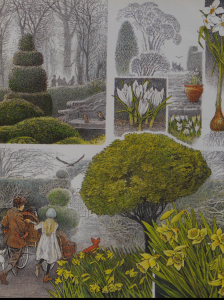
The fact that Both Mary and Colin are indulged, given every material comfort, but are unloved. is the root of the story and it relates very much to Burnett’s own life. She herself largely abandoned her children until Lionel was dying of TB aged only 16 when she rushed him round the spas of Europe unsuccessfully looking for a cure. She regretted her absence ever afterwards. There are all sorts of religious connotations too. Burnett toyed with Christian Science, with Country Life noting that if The Secret Garden “is another Christian Science story it’s none the worse for that.” Mary and Colin were, according to an article in The Church Times, “a direct result of how their parents have treated them… the embodiment of that very Old Testament concept of the fathers’ sins’ being visited on successive generations”
Is the story an attempt at her own redemption?
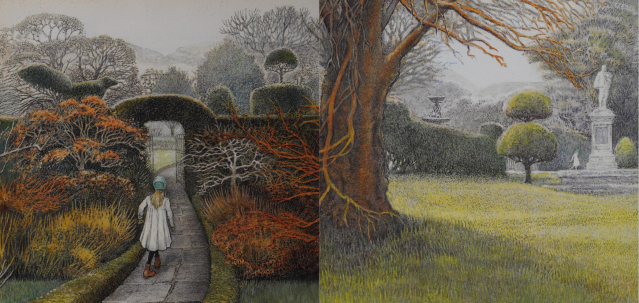
Surprisingly The Secret Garden didn’t start life as a children’s book. Instead it was first published in serial form as a serial in The American Magazine in 1910. This despite her writing to the publisher saying the book ” is not a novel, but a childs story ” although “it is an innocent thriller of a story to which grown ups listen spellbound to my keen delight.”
It was then published as a book for the Christmas market in 1911. Although it sold well enough at first, The Secret Garden then lapsed into mild obscurity for many decades. But as children’s literature began to receive more critical attention so it returned to popularity during the 1960s.
When copyright lapsed in 1986 publishers and illustrators were keen to produce new editions and it has been translated into nearly every known language and put on both big and small screen. It was first filmed as early as 1919 although that version has been lost, and there been at least 3 other screen adaptations since, in 1949, 1993 and 2020, with a strange steampunk version in 2017. TV versions appeared in 1975 and 1983. There is even a sequel, set 40 years later with Colin and Mary married and running Misselthwaite as an orphanage…and finally there’s a musical and an opera written in 2013.
Of course, the gardens Fanny knew were romanticised in The Secret Garden but she made no apologies for that. Instead she told a story, quite possibly apocryphal, of George Watts the painter: “He had painted a picture of Covent Garden Market, which was a marvel of picturesque art and meaning. One of his many visitors, a lady, looked at it rather doubtfully. “Well, Mr Watts,’ she said, ‘this is all very beautiful, of course, but I know Covent Garden Market and I must confess I have never seen it look like this.’ ‘No,’ replied Watts. And then, looking at her thoughtfully, ‘Don’t you wish you could!’”
After leaving Maytham, Frances returned to America and bought “a beautiful bit of land sloping by terraces…on which she built a large stucco house in the Italian style.”
This was Fairseat at Plandome on Long Island where she also built a house for her son Vivian and his family and laid out a new garden packed with roses. It was at Fairnest that she set up her desk in the conservatory and wrote The Secret Garden.
But she was still restless, often returning to England, and spending her winters with her sister at Clifton Heights in Bermuda where they created another garden covering some three and a half acres and planting no less than 762 roses: “They will bloom when New York is 70 degrees below zero and London is black with fog and slopped with mud and rain.”
When she died in 1924, friends created a memorial fountain to her in Conservatory Gardens, Central Park, New York which had sculptures of a boy and girl – for Mary and Dickon rather than Colin – even though it wasn’t finally installed until 1936. The Secret Garden was still one of her lesser known and less appreciated books, but the friends who decided on that theme chose well because children around the world still love the story of those three children who, with the help of nature bring the world back to life.
For more information good places to start are her biography by Anne Thwaite Waiting for the party : the life of Frances Hodgson Burnett, 1849-1924; and “Frances Hodgson Burnett” By Leonie Rutherford, in Dictionary of Literary Biography, Vol 141, British Children’s Writers, 1880-1914; Unearthing The Secret Garden The Plants & Places That Inspired Frances Hodgson Burnettby Marta Mcdowell; and Frances Hodgson Burnett: The Unexpected Life of the Author of The Secret Garden by Gretchen Holbrook Gerzina 2004.
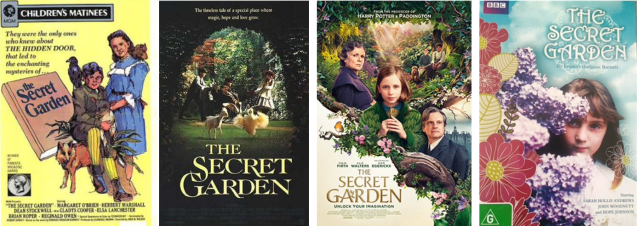
Posters for the 1949, 1993, 2020 film versions and the 1975 BBC TV series

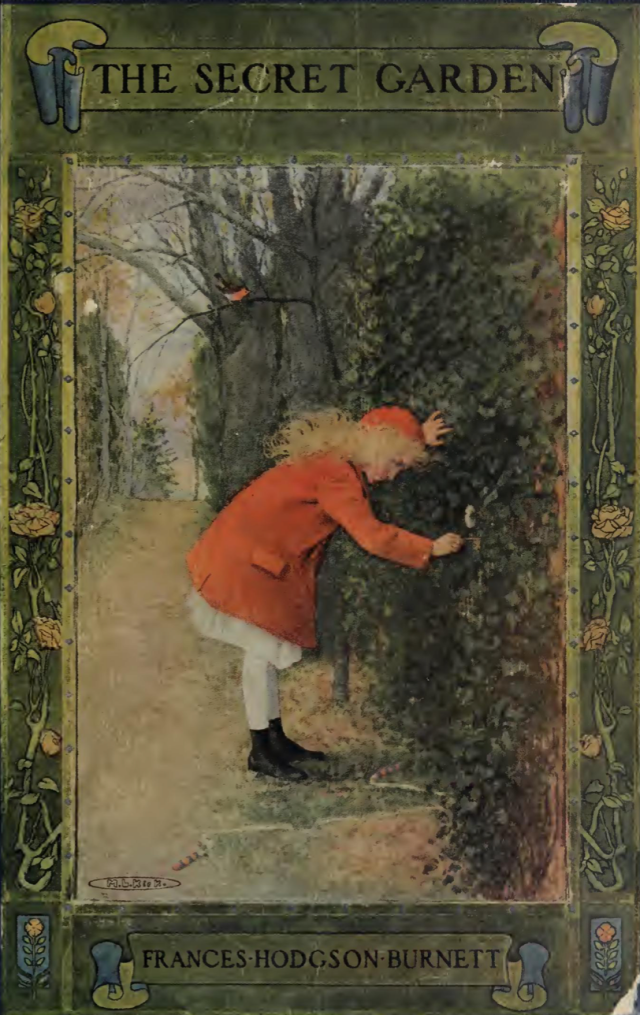
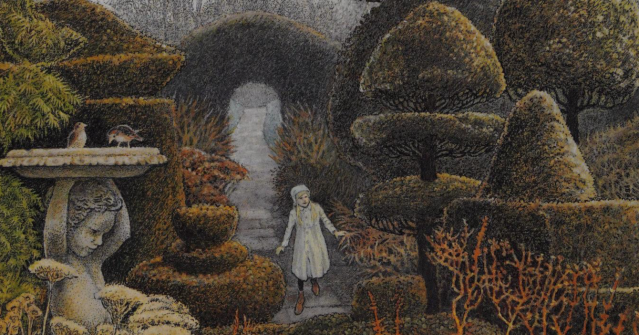

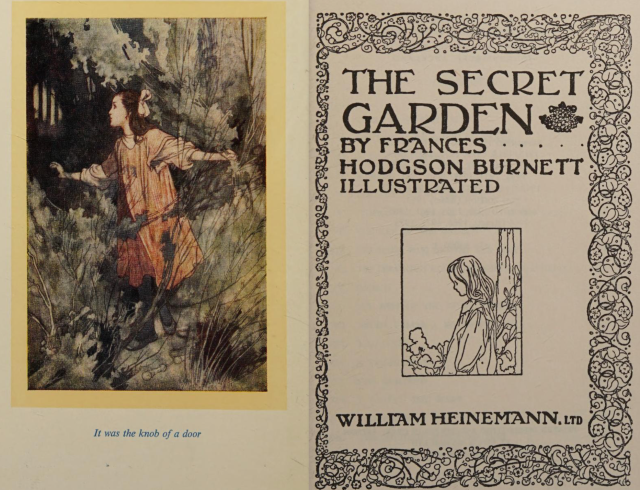
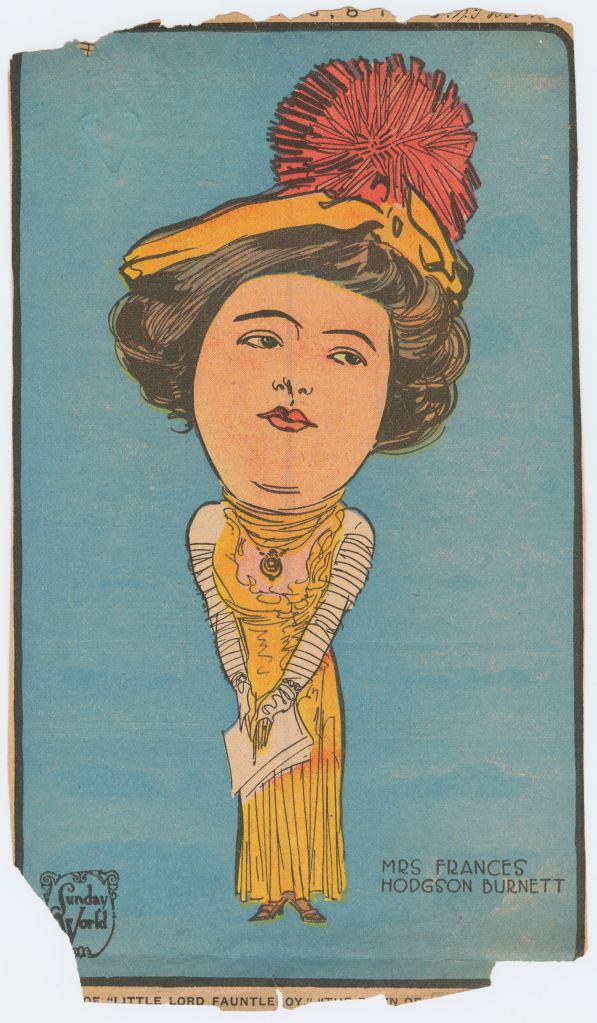

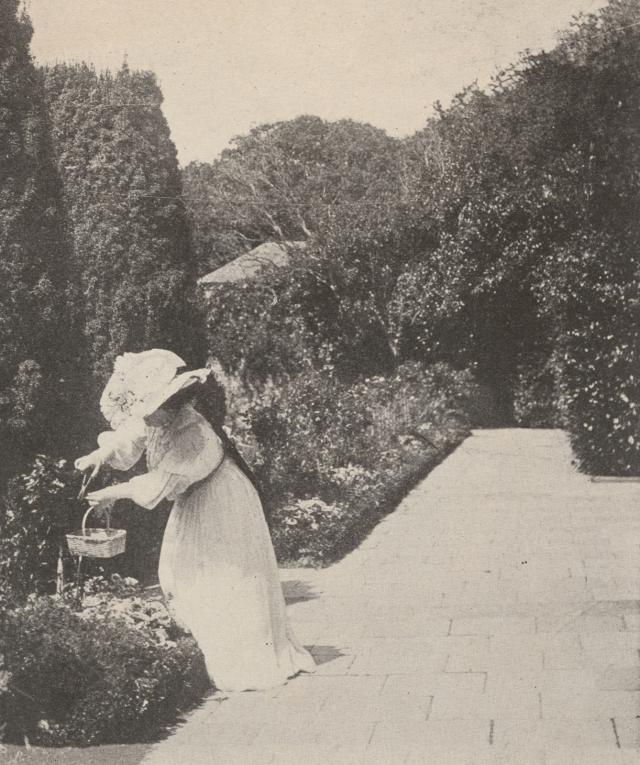
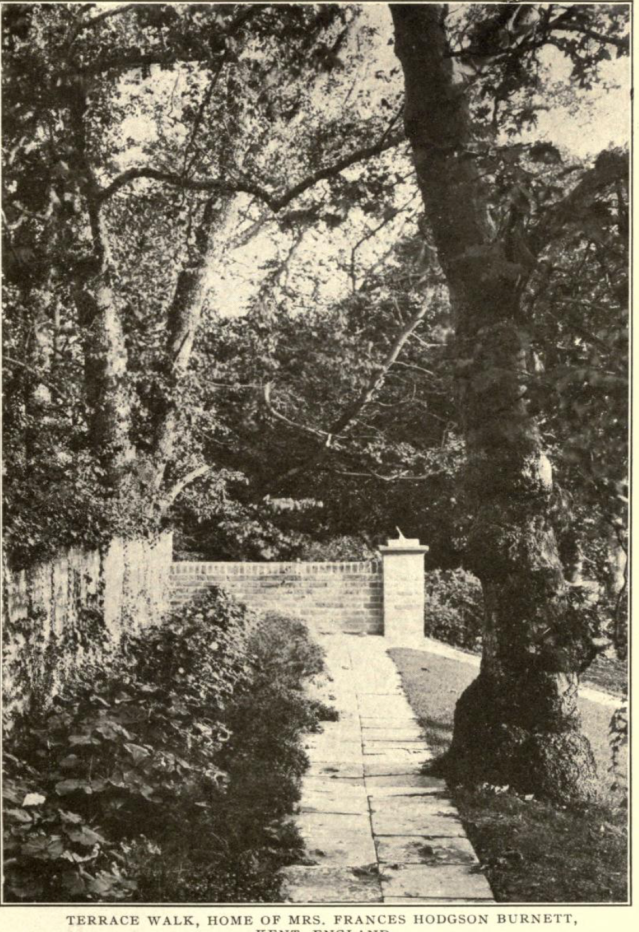
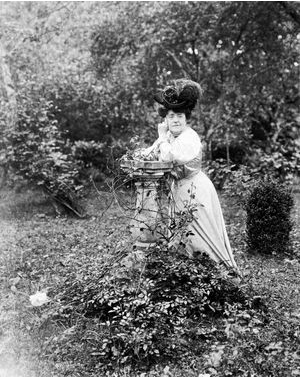

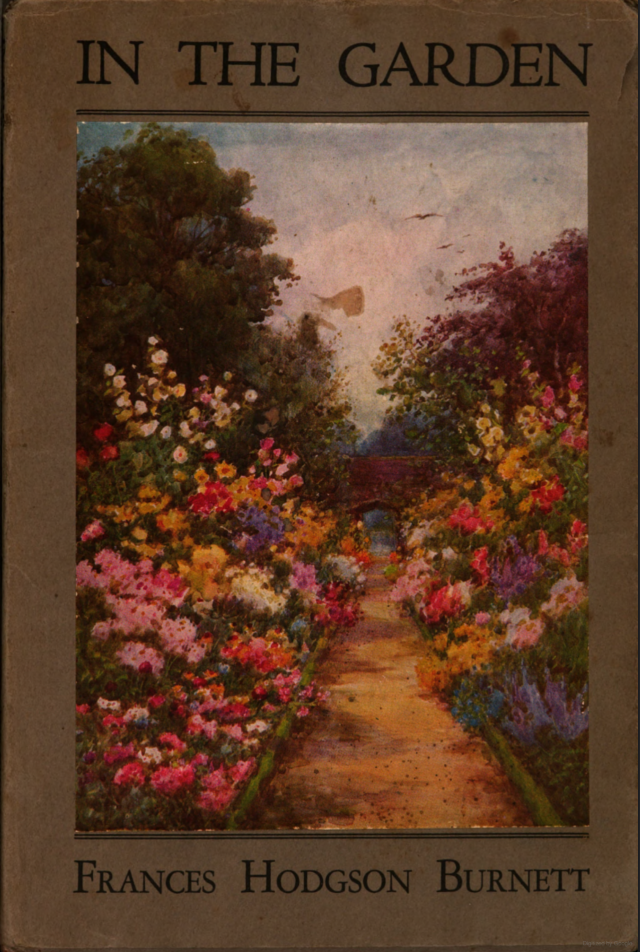
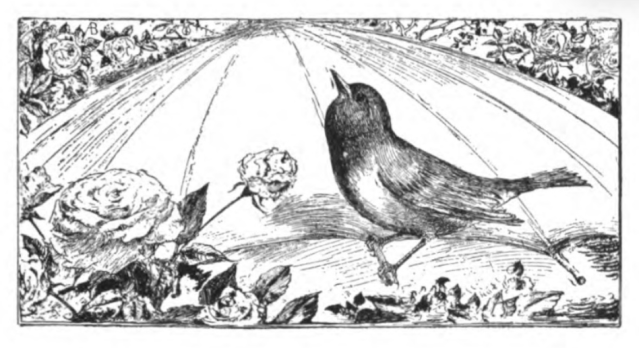


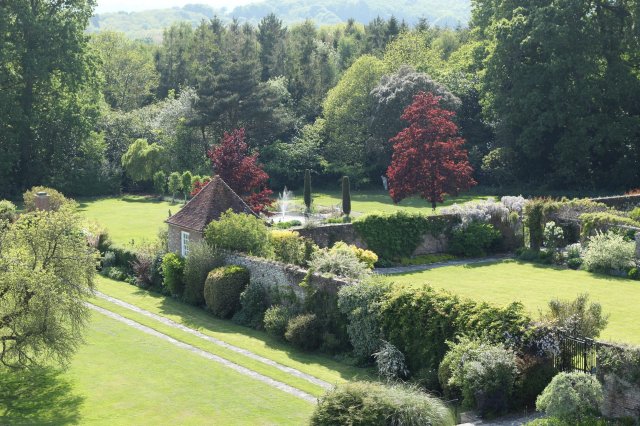
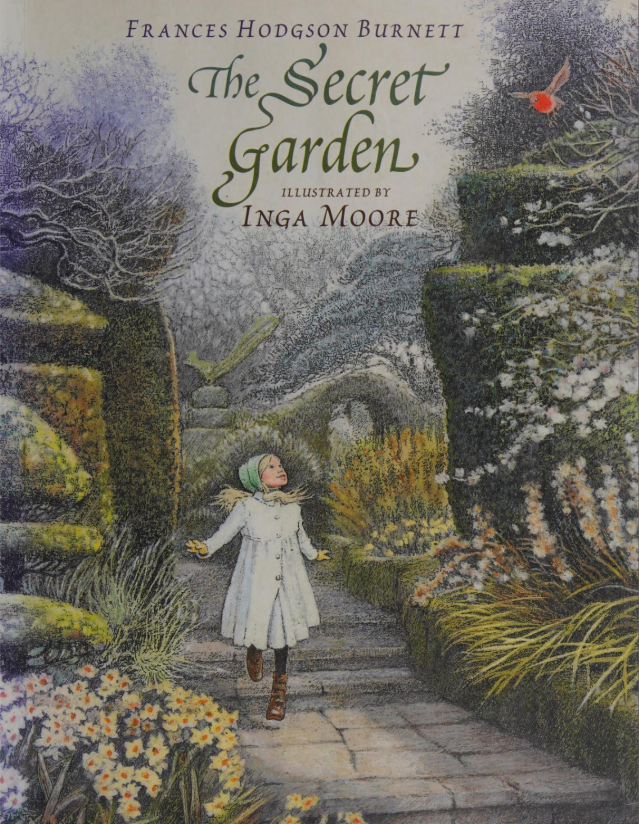
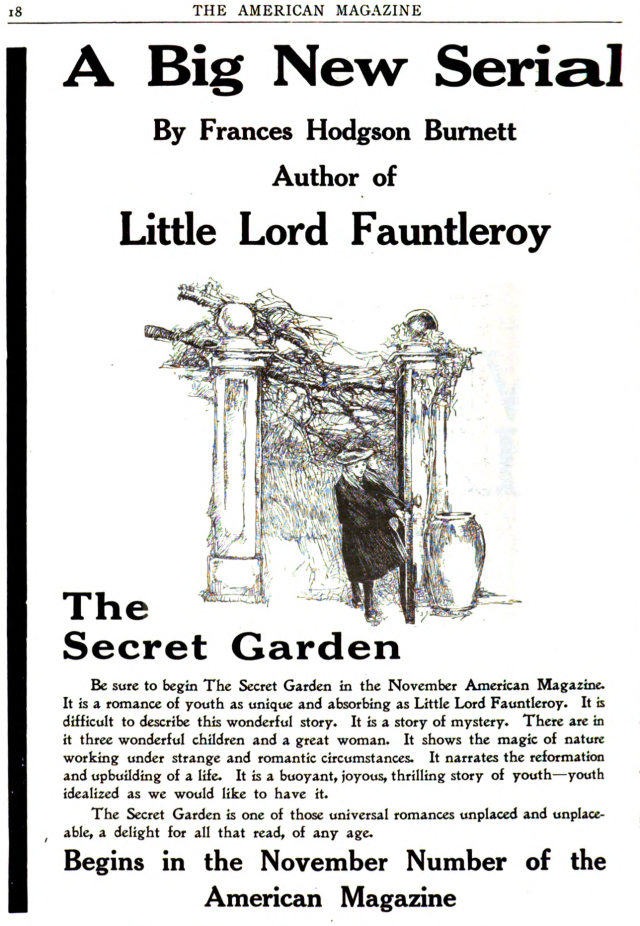
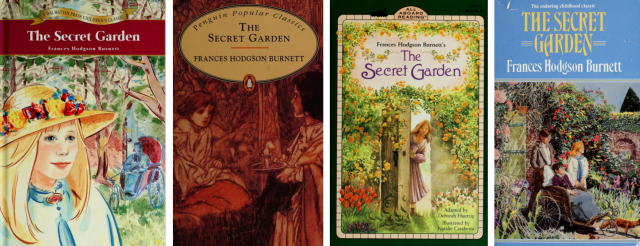
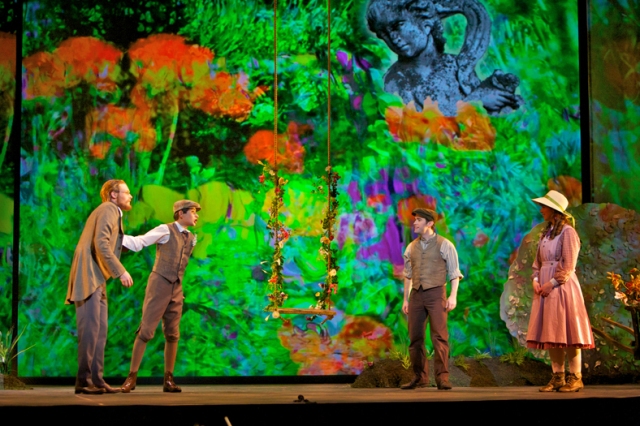


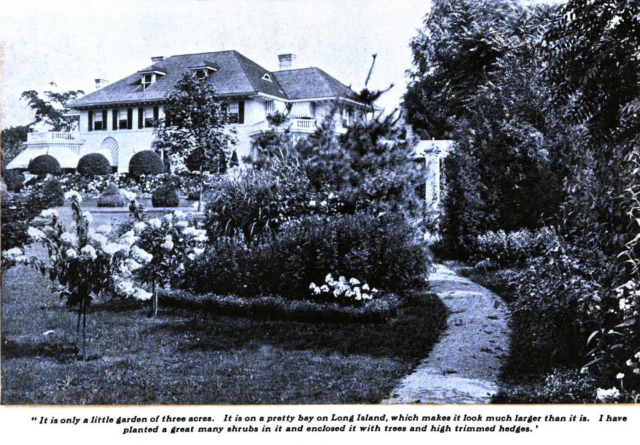
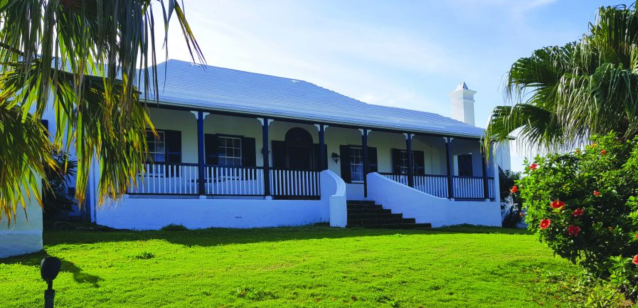
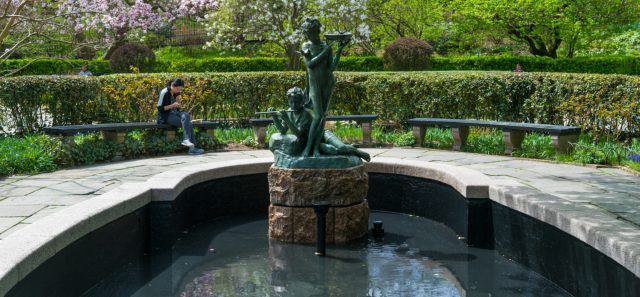
You must be logged in to post a comment.